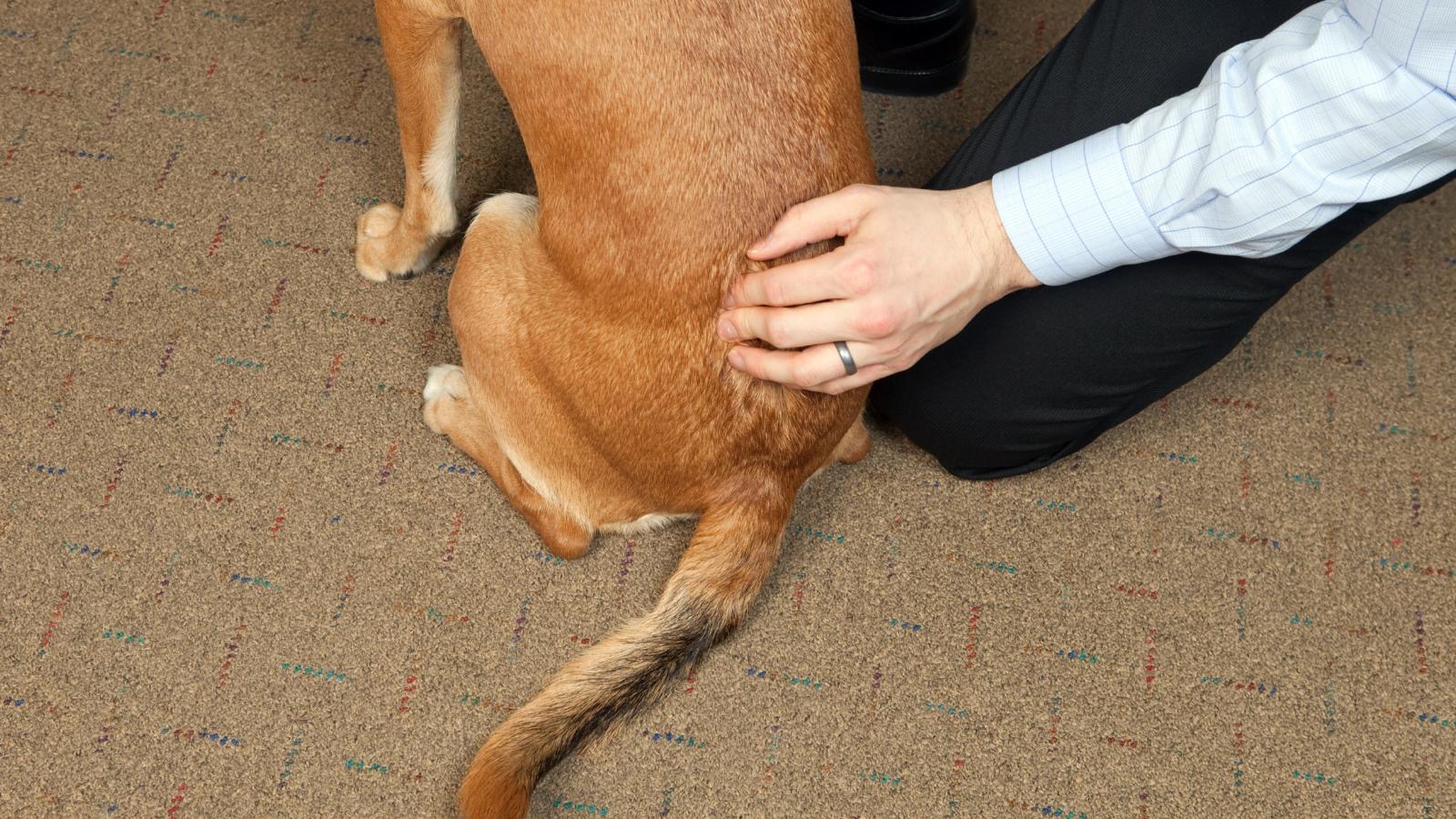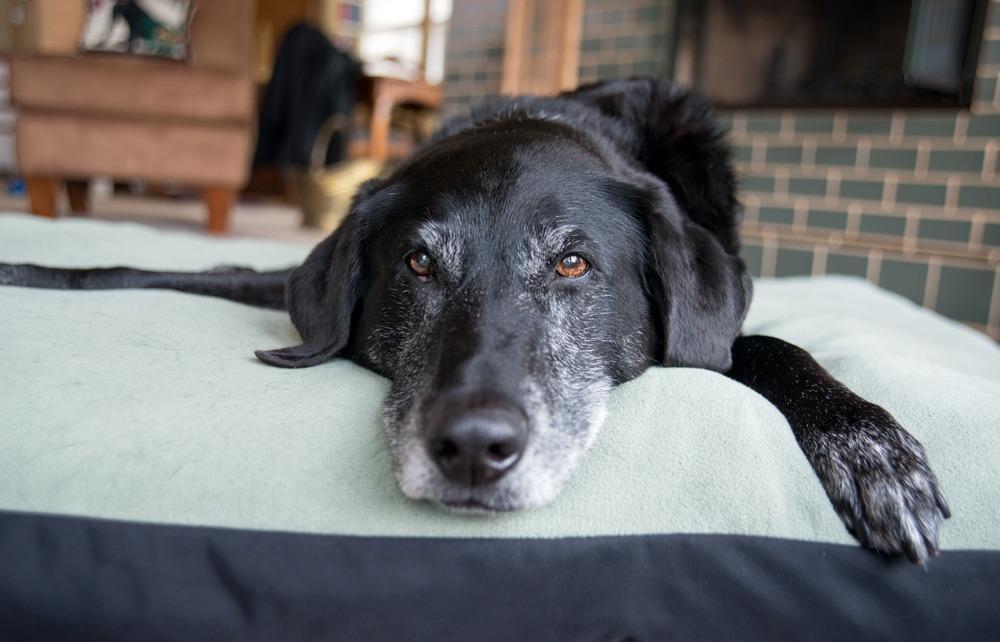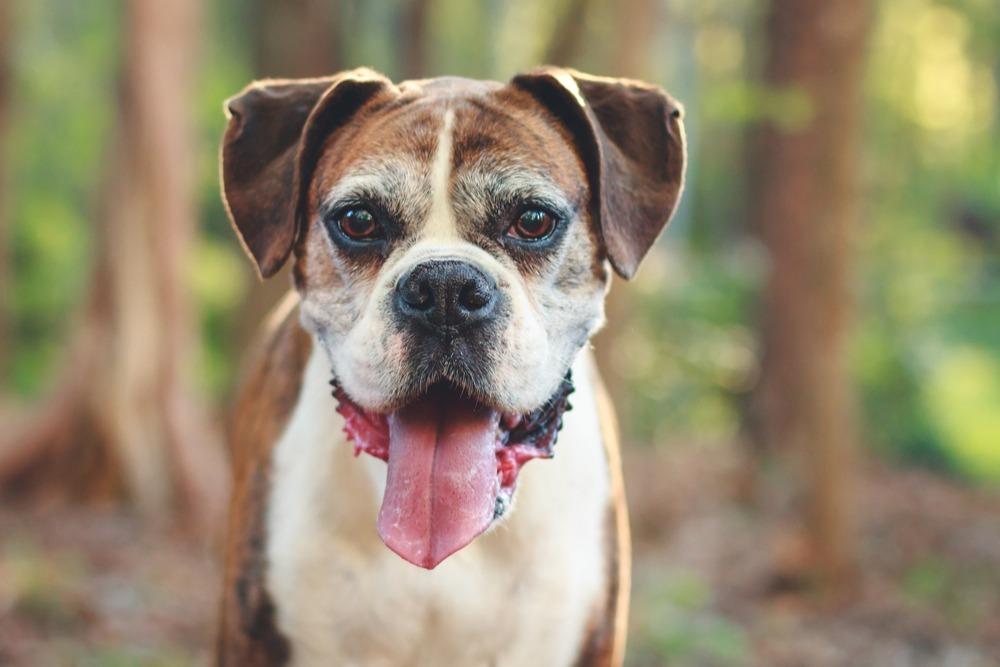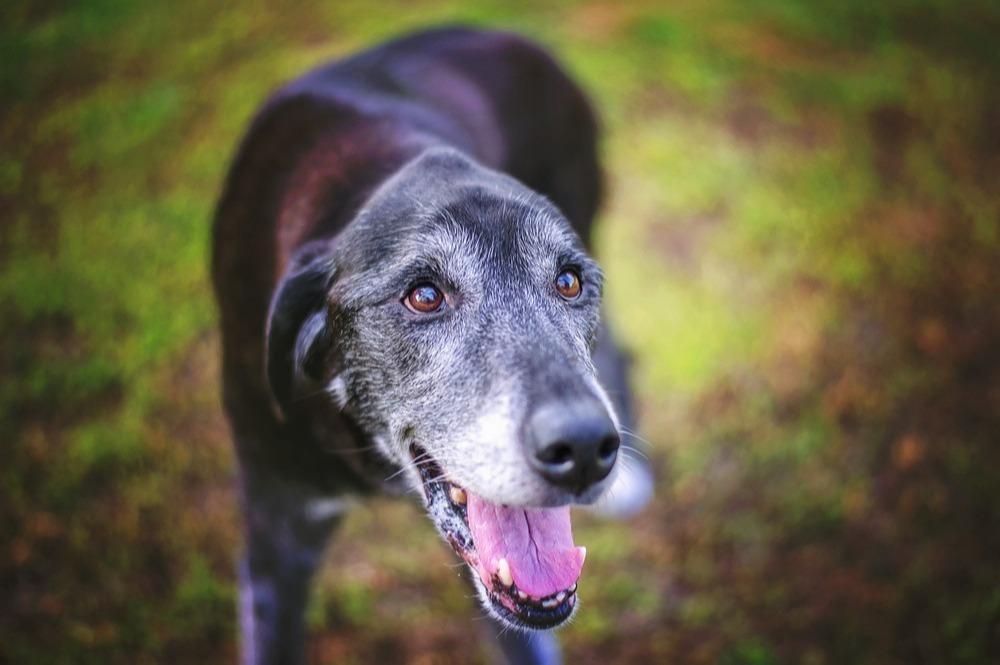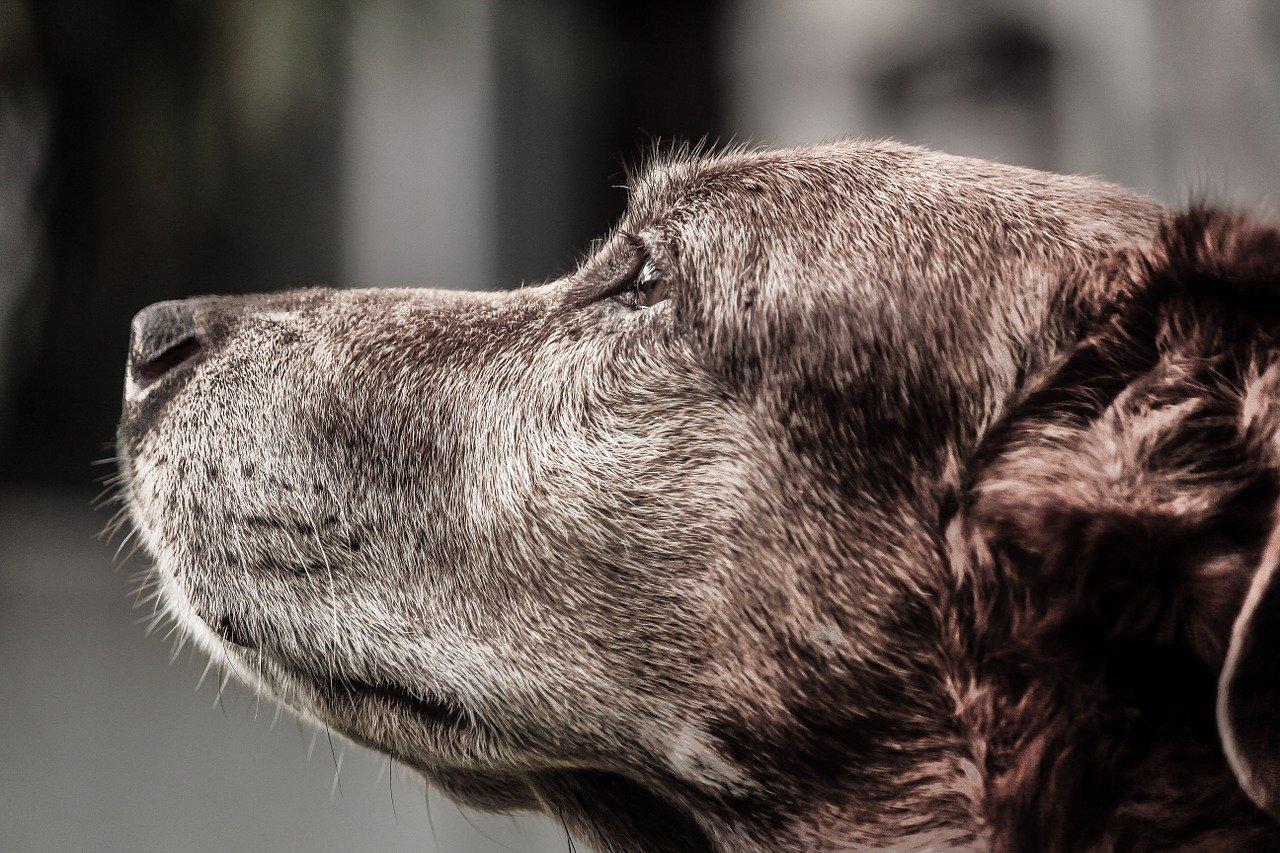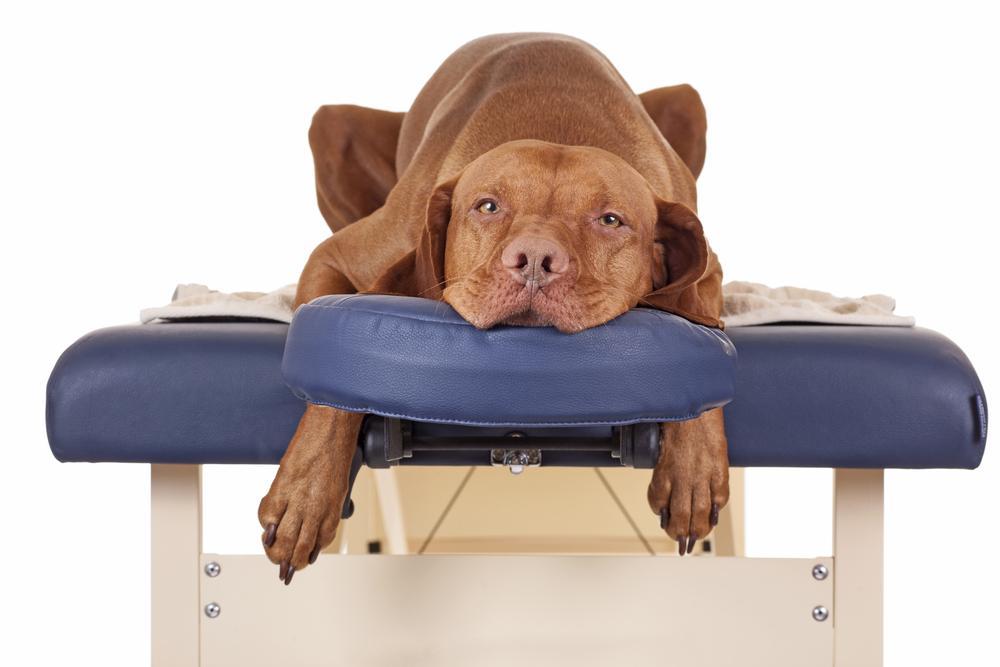Here at My Pet Nutritionist, we help pet owners with a host of different health conditions. One we see from time to time, is Spondylosis in dogs. Us humans can get Spondylosis too, but it tends to be more common in our canine companions than it does in their owners. This blog post aims to help you get a better understanding of Spondylosis in dogs, including what it is, how to spot the signs and symptoms, and how you can support the body naturally.
What is Spondylosis?
Spondylosis, called Spondylosis deformans in the veterinary world, affects the spine; more specifically, the vertebrae – the bones that make up the spine. It’s a degenerative condition, which means it gradually gets worse as the patient ages.
Those with spondylosis have bony spurs growing on their vertebrae, known as osteophytes. But why are these growths bad news? The vertebrae protect the spinal chord – probably one of the most important parts of the body as it sends signals between the brain and the rest of the body, and vice versa, and ais also involved in reflexes and coordination. The body spurs growing on the underside of the vertebrae can rub on the spinal cord, causing damage, which then has a knock-on effect to the dog’s sensory capabilities, and ability to move freely.
Spondylosis can be widespread, with bony spurs forming along the entire spine, or localised, where they only form in one or two spots. It is most commonly seen in the lower spine, AKA the Lumbar Region, as well as hips and tail. In particularly bad cases, bony spurs can fuse vertebrae together, making mobility tricky.
Spondylosis is quite common in aging dogs, especially those who are heavier set, such as giant breeds, or breeds with cobby bodies, and short legs, but it can happen at any age and breed, depending on the cause, which we will look at shortly.
The most commonly affected breed is the Boxer, where estimates suggest around 70% of elderly individuals over the age of 9, have been diagnosed with the disease.
Findings Here
Symptoms of Spondylosis
The somewhat strange thing about symptoms when looking at a potential diagnosis of Spondylosis, is that there are very few clinical signs presented, especially not those specific to the condition. Some symptoms you may notice include:
- Spinal pain: hunching of spine, lameness, unwillingness to walk, difficulty laying down and standing up, general reduction of mobility
- Behavioural changes: your dog may become more reactive due to pain, and the fear of being hurt by another dog bumping them.
- Yelping when specific areas are manipulated
- Lethargy
- General weakness and stiffness
- Reduced appetite
If your dog is displaying these signs, there could be a number of potential spinal issues, so it’s important to consult your veterinarian to grasp a better understanding of the exact issue your dog is having.
Causes of Spondylosis
So why does Spondylosis occur?
It can be a natural part of the ageing process – just through general wear and tear of an older dog.
Another cause of the development of Spondylosis, is trauma to the spine from injury, whether it’s minor trauma, like a bump to the spine, a wobbly landing from a higher surface, or repeated over-use of the spine (often seen in sports dogs who do the same movement repetitively), to major trauma such as having been hit by a car, or having had surgery to correct IVDD.
A third potential cause of Spondylosis, is genetic predisposition. There are not many predisposed breeds, but the most commonly seen tend to be Boxers, German Shepherds, and Flat Coat Retrievers.
Spondylosis can also form as a secondary disease! Between the vertebrae of a healthy dog, lays soft tissue. This enables the discs to act as shock absorbers, and softens impact, keeping the vertebrae separate. There is a degenerative disc disease, previously mentioned in its abbreviated form, IVDD (Inter-Vertebral Disc Disease), in which the tissue between the vertebrae wears away, leaving bone to rub on bone, prompting the formation of bony spurs to re-stabilise the joint.
Findings Here
Diagnosing Spondylosis
As there is usually a lack of obvious symptoms in cases of Spondylosis, it can be tricky to pinpoint a test for it. If your dog is experiences clear signs of back pain, or even just at the vet for their annual health check where the dog displays possible signs of pain, the vet will use your dog’s medical history records to look for potential missed signs. They will perform any neurological and orthopaedic examinations they feel are necessary, and go from there. Your vet will typically want to rule out any other potential health issues before testing further for Spondylosis.
A canine physiotherapist may be able to give a better look into mobility and how your dog’s gait is affected through a video analysis. This may be done through referral; however many allow the owner to book directly in with them to discuss the video, and their findings.
Once your veterinarian has ruled out the potential for other, perhaps more common health issues, he or she will book your dog in for an x-ray of the spine, which includes the chest and abdominal cavities, naturally. X-rays tend to give a definitive answer as to whether the dog has Spondylosis or not, due to the visibility of bony spurs on the vertebrae.
Less commonly, a vet may recommend an MRI scan – these tend to show potential spinal cord damage as opposed to the bony spurs themselves, which can be an important part of recommending the correct treatment. This procedure is usually carried out on referral with a neurologist.
Findings Here
Conventional Treatments
There is actually very little a veterinarian can do in the event of a dog having Spondylosis, as every individual is different. The treatment plan is heavily based on symptoms the individual’s dog is showing, now a generalised treatment plan, which would be the same for all sufferers.
Pain medication is regularly prescribed for those suffering with Spondylosis, whether it’s a Non-Steroidal Anti-Inflammatory Drug (NSAID), and other pain relief which commonly includes either Gabapentin or Tramadol. This is an attempt to relieve the dog from the potentially ongoing pain they may be experiencing.
Surgery would be an absolute last resort, and only offered to the worst of sufferers, whom without surgery, would have an extremely poor quality of life. This would be carried out by an experienced, specialist neurosurgeon at a referral hospital.
In cases of Spondylosis, veterinarians will often recommend conservative management, which consists of many natural therapies and supplements, which moves us smoothly on to how we can support the body naturally!
Supporting the Body Naturally
There are many holistic therapies, dietary tweaks, and natural supplements which can help support the body through conservative management of Spondylosis. Let’s take a look at these!
Therapies and Body Management
Weight Control
Controlling your dog’s weight is extremely important in all aspects of health, and Spondylosis is no different! Being overweight puts immense pressure on the spine and hip joints. As the spin and hop joints are already suffering from lack of soft tissue cushioning, and the growth of bony spurs, the less pressure as possible is much needed.
If your dog is overweight, and struggling with Spondylosis, you may need to consider tailored exercise, or hydrotherapy for your dog, possibly on the advice of a canine physiotherapist, or your veterinarian. A diet for weight loss may also be necessary – contact us for tailored advice on feeding for weight loss.
Findings Here
Tailored Exercise and Rest
Depending on your vet or physiotherapist’s recommendations for your individual dog, you may need to change the type, impact, length or frequency of your dog’s normal exercise regime. They may also recommend complete rest. It very much depends on the symptoms displayed by your dog, and their severity.
Hydrotherapy
Hydrotherapy can be a fantastic exercise choice for dogs with Spondylosis, due to it being non weight bearing. It’s important to ensure this is carried out under the guidance of a professional, qualified canine hydrotherapist. Water based exercise is non-weight bearing, which is perfect for those suffering from any weight-bearing joint pain, almost anywhere in the body. It also helps to strengthen the muscles around the spine, which help stabilise the joints.
Your veterinarian may need to refer you, in order for a hydrotherapist to book your dog in.
Findings Here
Chiropractic Therapies
Canine chiropractic and massage clinics see a lot of Spondylosis cases, as they primarily deal with the spine, and joints. Your dog’s spine may easily become misaligned when they have Spondylosis, which will cause further discomfort. A qualified professional chiropractor can help realign the vertebrae, which reduces the risk of bony spurs rubbing against each other, or the spinal cord. Massages of the muscles around the area (which will be working hard to keep the spine stable) may also relieve pain, as well as inflammation in these muscles, which ultimately leads to a happier dog!
Findings Here
Physiotherapy
Canine physiotherapy may also be an option for your dog, if referred by your veterinarian. The purpose of physiotherapy is to regain flexibility, and strengthen muscles around joints for stabilisation, in order to reduce pain, slow down degradation of the area, and to aid mobility for longer. A physiotherapist can help with gait analysis and suggest specific exercises which may help your dog target specific parts of the spine affected.
Findings Here
Acupuncture
Acupuncture is an ancient treatment, whereby very fine needles are inserted into very precise areas in order to relieve the area from pain and inflammation. This holistic therapy can be used for a huge host of conditions, including Spondylosis. Relieving pain and inflammation is paramount for those suffering with Spondylosis, and to help slow down degeneration of the areas involved.
Findings Here
Diet
Fresh Feeding
When it comes to diet, those who have been readers for a while, will see we recommend feeding a fresh diet, whether that’s raw, or cooked. The root of health, is diet, so it’s important to nourish the body from the inside out. Feeding fresh allows you to tailor your dog’s diet to their specific condition.
Dry food is often full of synthetic vitamins and minerals due to the extreme heat processing involved in it’s manufacture. synthetic vitamins and minerals may not be as useful for the body as fresh ingredients, so it’s wise to skip the dry food, and switch to a fresh diet if your dog is suffering with any joint disease, so the helpful ingredients in it are working to their best capabilities! Find out more about these ingredients next.
Functional Foods
Wheatgrass plays a powerful role in reducing joint and bone inflammation, so is well known for aiding those with degenerative joint diseases, including Spondylosis and Osteoarthritis.
Findings Here
Hemp Seeds are packed full of antioxidants which are essential for joint health, as well as having great anti-inflammatory benefits. Studies show that adding hemp seeds to the diet of an individual with degenerative joint diseases can massively influence pain reduction, and help keep the patient more comfortable.
Findings Here
Bone Meal is an essential part of a balanced cooked meal due to the calcium it provides. Calcium is essential for bone health, and stool formation, but has also been shown to massively benefit those with degenerative joint diseases, as it keeps bones healthy and supports bone strength.
Findings Here
Kelp is well known for being packed full of beneficial micronutrients. It is fantastic for joint and bone health due to being rich in calcium. When specifically looking at Spondylosis, the content of copper in kelp is beneficial to help keep the myelin sheath which surrounds nerves for protection against damage, strong. Protecting the spinal cord as much as possible is very important! Manganese, another mineral found plentifully in kelp, is very useful for aiding the formation of connective tissues, which Spondylosis sufferers may be lacking.
Studies show that the alginates found in kelp and other brown seaweeds, could form part of a powerful remedy for joint health and comfort, ultimately reducing the underlying causes of pain, and vastly reducing the rate of degeneration of joints.
Findings Here
Findings Here
Ghee is a common ingredient in Indian cooking, however not only does it act as a tasty cooking fat for us humans who are partial to a curry, it also has great lubricating effects on the joints, and is suitable in moderation for our dogs. As well as being a great joint lubricant, allowing for freely moving joints throughout the body, it also has brilliant anti-inflammatory properties, so may be very beneficial if your dog suffers from any degenerative joint disease.
Findings Here
Turmeric is the final functional food we will discuss, before moving on to supplements. Turmeric is very well renowned for it’s powerful anti-inflammatory properties, which massively benefits the joints. In order to work to it’s full potential, it’s best to combine turmeric with a fat, such as the aforementioned ghee. It’s important to note that turmeric should be stopped a few days prior to any surgery as it acts as an anticoagulant. It can be resumed once the patient is fully healed.
Findings Here
We have two fantastic recipes geared toward joint support, available on our website! They contain lots of therapeutic ingredients, for healthy joints.
Beef Joint Support Recipe
Lamb Joint Support Recipe
Supplements
There are various supplements which may be beneficial for your dog suffering with Spondylosis, or any other degenerative joint disease. We will take a dive into some of the options available.
Joint Support
Glucosamine, MSM (Methylsulfonylmethane) and Chondroitin Sulphate are three fantastic anti-inflammatory sources. These are found in many pre-mixed joint support products on the market. They offer anti-inflammatory properties, bone strengthening properties, and joint lubricant properties, so are great for all-round joint health and support. When choosing a supplement, try to avoid products with bulking agents in, such as corn/maize, maltodextrin, magnesium stearate and crystalline methylcellulose. Be sure to read the ‘inactive ingredients’ lists to spot these, as they can be detrimental to health if used long term. Clean supplements are usually in powdered form, such as Riaflex Joint Plus.
Glucosamine can be found in shellfish shells, which makes it tricky to source from fresh ingredients.
Chondroitin is plentiful in poultry feet, and other cartilage containing animal parts.
MSM is often found in fruits and vegetables.
Findings Here
Findings Here
Findings Here
Curcumin is the active ingredient in turmeric. If your dog is not consuming turmeric as part of his or her diet already, adding curcumin in it’s liposomal form may be most beneficial, as this is the most bioavailable method of consumption. The anti-inflammatory properties of curcumin may be extremely useful for your dog with Spondylosis.
Findings Here
Green Lipped Mussel can be given in the form of a powdered supplement, fresh raw, or cooked whole. GLM is a brilliant source of Omega 3, and being ‘novel’, can have greater effects than more common proteins. It is high in EPA, DHA and ETA, so is a great general source of omega 3. Omega 3 has brilliant anti-inflammatory properties, so greatly helps reduce joint inflammation, and therefore alleviates pain around the joints. Keep reading for more information on Omegas.
Findings Here
Omegas
Omegas are an essential part of any diet, in order to keep inflammation in the body stable. They’re essential Fatty Acids, and most commonly spoken about in the nutrition world, are omegas 3, 6, and 9, but we will focus on omegas 3 and 6 in this blog post. Omega 3 and 6 work in tandem, almost like a seesaw. Omega 3 is anti-inflammatory, while omega 6 is inflammatory (with the exception of GLA). Ensuring the balance of omega 3 to 6 is correct, means inflammation in the body remains steady – too much omega 6 compared to omega 3, and inflammation can occur.
The body is unable to produce omega 3, so it must be given in the diet. The body is able to produce two types of omega 6, however. Different fatty acids are used for different functions in the body.
The three omega 3 fatty acids, their sources, and their roles are as follows:
- Eicosapentaenoic Acid (EPA): found in fatty fish and fish oils, as well as many algal oils. Helps reduce inflammation.
- Alpha-linolenic Acid (ALA): found in flaxseed oil and chia seeds. For a non-plant based form, oysters can be added in. Aids heart and immune health.
- Docosahexaenoic Acid (DHA): found in fatty fish , fish oils and algae oils, and eggs. Aids brain health and development.
Meanwhile, the three omega 6 fatty acids, and their sources are as follows:
- Linolenic Acid (LA): found in sunflower oil and corn. Cannot be produced by the body.
- Gamma-linolenic Acid (GLA): found in Hempseed oil, borage oil, and Evening Primrose oil. This is the only Omega-6 which is not inflammatory – it’s great for control of hormones.
- Arachidonic Acid (ARA): found in meat and poultry, particularly farmed.
Some great dietary sources of healthy, anti-inflammatory omega 3 are:
- Oily fish: raw sprats, sardines, salmon, mackerel, herring and trout, tinned sardines or mackerel.
- Tinned sardines or mackerel (avoid those in sunflower oil due to the omega 6 content, as this would negate the goodness of the omega 3 in the fish)
- Fish oils: krill oil, sardine oil, anchovy oil, herring oil. Keep these in the fridge once opened, and buy small bottles to avoid rancidity. Alternatively use capsule versions. If using salmon oil, stick to only encapsulated products.
- Green lipped mussels, and oils (as previously mentioned)
- Phytoplankton
- Algae oil
Feeding a variety of omega 3 sources ensures you get the most out of supplementation, as you will be able to provide your dog with a larger range of fatty acids, therefore reducing more inflammation, and in turn, reducing joint pain from your dog’s degenerative joint disease.
Findings Here
Findings Here
We hope this guide has helped you understand more about the condition your pet may be facing. If your dog has been diagnosed with Spondylosis, or any other degenerative joint disease, and you feel you may require more one to one, tailored support; please book a consultation with one of our team!
Team MPN x 


